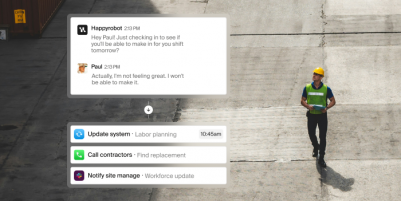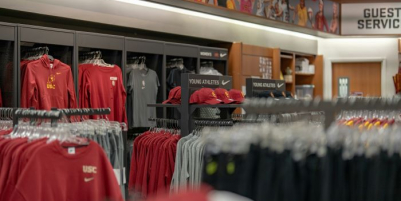-
AI startup Onton raises $7.5M to reinvent the way the world discovers and decides what to buy - November 26, 2025
-
Forklift Market Positions for Recovery as Confidence Expected to Build from 2026 - November 26, 2025
-
PROCare achieves 300% order capacity increase and 99% picking accuracy with Forterro’s ERP solution, Orderwise - November 26, 2025
-
DHL boosts operational efficiency and customer communications with HappyRobot’s AI Agents - November 25, 2025
-
STENA LINE TEAMS UP WITH CAMERA TELEMATICS TO DRIVE SAFETY IMPROVEMENTS AT IRISH SEA PORTS - November 25, 2025
-
Another design award for Toyota’s lithium-ion Traigo_i counterbalanced forklift - November 21, 2025
-
Stuut Technologies Raises $29.5 Million Series A Led by Andreessen Horowitz to Automate Accounts Receivable Work - November 20, 2025
-
INCREASED DIGITAL INVESTMENT REQUIRED TO KEEP PACE WITH 2026 CUSTOMS CHANGES - November 19, 2025
-
FULFILMENT SOLUTIONS FOR SPORTS MERCHANDISE: KEEPING OUR EYE ON THE GAME - November 19, 2025
-
COMPLEX, COSTLY & CONFUSING – THE END OF DE MINIMIS - November 19, 2025
Plea to retail and hospitality to avoid panic planning, in the face of chaotic demand as lockdown restrictions ease
Manual workforce scheduling could result in losing staff and revenue, warns Quinyx
While the easing of lockdown restrictions across England on Monday 12 April received nationwide fanfare, cash-strapped industry leaders in the retail and hospitality sectors could be facing even greater losses, if they fail to adopt new technologies.
This warning comes from Daniel Holmberg, Country Manager from Quinyx UK, as figures released from the first lockdown milestone – the re-opening of outdoor hospitality and non-essential retail from Monday 12 April – revealed a picture of wildly unpredictable demand.
Daniel explains: “The last 12 months have been a rollercoaster for many retail and hospitality companies, so there’s an understandable excitement to open their doors and start trading again.
“However, the business landscape they’re now operating in is like nothing they’ve experienced before and there’s a high risk of mismanaging staff, and maybe even losing them, if too much trust is placed on slow and labour-intensive manual workforce scheduling processes.”
The Office for National Statistics reported that on Saturday 17 April 2021, estimates for UK seated diner reservations were at just 60% of the level seen on the equivalent Saturday of 2019, despite it being the first weekend since November 2020 that pubs and restaurants could open for outdoor service.
Daniel adds: “What’s worrying for bosses responsible for workforce planning is that later that week, on what was expected to be one of the busiest days for hospitality, diner numbers dropped by 19 percentage points on Saturday 17 April[1] compared with the Monday. This fluctuation in footfall in the first week alone, without even considering other factors such as unpredictable weather, shows what a logistical challenge managers face in the hospitality sector.”
Based on ONS date for the retail sector, the number of shoppers increased by almost a third (31%) from Monday 12 April compared to the week before. Shopping centres saw the biggest boost to footfall, followed by high streets.
“Peaks and troughs in customer demand, based on variables out of everyone’s control, mean there’s no trend to draw from when it comes to planning necessary staff cover,” says Daniel. “There’s the potential for staff to be inadvertently pulled in all directions, with little communication from their line managers and short notice of working hours. In fact, a recent study by Living Wage cited that among the 59% of workers whose job involves variable hours or shift work, 62% reported having less than a week’s notice of their work schedules. At the extreme, 12% of this group – amounting to 7% all working adults – had less than 24 hours’ notice.”
Daniel hopes those managing deskless workers in these sectors through manual methods such as excel spreadsheets and handwritten rotas, will set aside nervousness around investing in technology during times of hardship, and consider the return workforce management tools can deliver, thanks to more efficient and intuitive scheduling, and better communications with staff.
Quinyx has launched a special report to help allay some of the fears managers have when it comes to introducing a tech solution. Titled ‘Burden or Benefit? How technology is helping inspire positive change’ the report presents data on why it pays to invest in an AI-driven solution.
“Our report highlights how staff turnover can be costly, to the tune of £15,334 per replaced employee. It also covers how inefficient scheduling could mean a business loses 40% of its annual income – due to over and understaffing and lost revenue, plus a handy checklist for how to approach finding the right tech partner,” Daniel concludes.

































